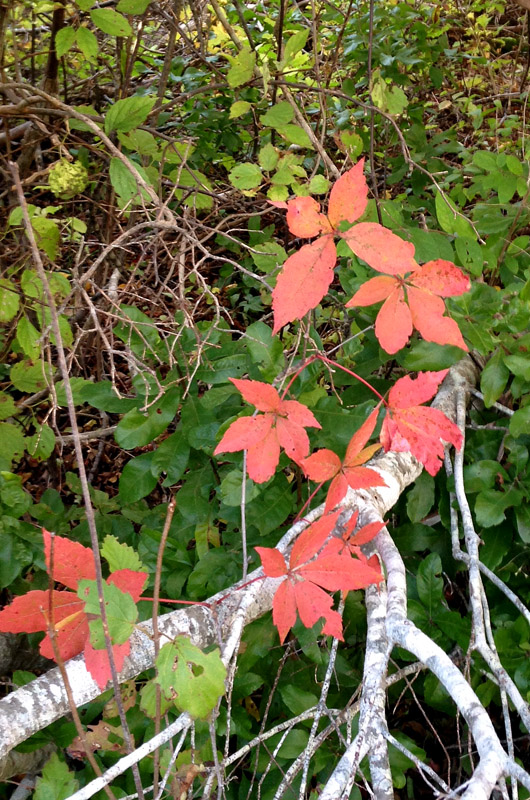“I’m so glad I live in a world where there are Octobers,” enthused Anne of Green Gables. That sentiment rings true for many Islanders.
Adding to the wonder of October is the changing foliage. Leaves have begun to show their true fall colors. Bold greens are changing to reds, browns, and yellows, and falling to the ground, bringing a crunch to each step!
Pigments, process, and peculiarities guide these changes. They give each year’s fall a distinctive look, sometimes bursting with color; at other times, a more muted mien. Off-Islanders have been reporting changes already seen, up-Islanders are now observing vivid color transformations, and down-Islanders are heralding the arrival of the slower changes to their landscapes.
The leaf color that we see is the result of pigments in the leaves. Most of us know that it is chlorophyll that makes leaves green, but other pigments —carotenoid and xanthophyll —are also present in leaves. These less-familiar pigments lurk quietly in the glorious greens until the diminishing of sunlight, the decrease of temperatures, and the slow cessation of chlorophyll production encourage their appearance.
Carotenoid and xanthophyll are not really strangers to us. They are the pigments that give carrots, corn, eggs, and bananas their yellow or orange appearance. They likewise provide the yellow and orange hues of certain plants’ leaves. Birch, poplar, sassafras, bittersweet, and hickory trees are known for these fall leaf colors. In fact, color can help identify a tree if you know which tree sports what colors.
Maples, beetlebung, dogwoods, poison ivy, and Virginia creeper are notable for providing the Island’s seasonal reds. It is another pigment, anthocyanin, which causes that comely crimson, as well as the shades of purple or blue, in late-season leaves. Anthocyanin is not always present in leaves, but is manufactured from sugars trapped in the leaves later in the season. This pigment is also responsible for the colors of cranberries, apples, cherries, and strawberries, and may be responsible for our instinctive reaction to red and orange foliage as somehow looking more healthy and attractive than pale yellow or brown foliage.
Even if leaves fall off the trees in brilliant colors, they won’t stay that way. The aforementioned pigments break down and the leaves fade to a brown caused by the remaining pigment, tannin. Oaks come to mind as a tree that showcases its tannins.
With all of nature’s chemistry and tints, it is easy to think of the seasons as works of art. And it’s also logical to look to poets and artists to describe them better than scientists can. Reader’s Digest poet Stanley Horowitz sees the art in nature, explaining: “Winter is an etching, spring a watercolor, summer an oil painting and autumn a mosaic of them all.” It’s quite invigorating to contemplate these four types of art that we walk through each year.
But to transit back from art to science: While we can’t be sure whether leaf-peeping season will be mainly muted or glaringly gorgeous, there are a few factors that might scientifically give us a clue.
The best fall colors occur when there is a warm, wet spring, a not-too-hot or even dry summer, and a fall with warm sunny days and cool nights. Alternatively, drought, early or severe frost, or a warm, wet fall can all lower the intensity and brightness of the leaf-peeping season.
No matter what the season brought, French philosopher Albert Camus made the best of it, positively comparing the flora of both shoulder seasons. “Autumn is a second spring when every leaf is a flower.” Enjoy your bouquet of fall’s finest foliage.
Suzan Bellincampi is director of the Felix Neck Wildlife Sanctuary in Edgartown, and author of Martha’s Vineyard: A Field Guide to Island Nature.








Comments
Comment policy »